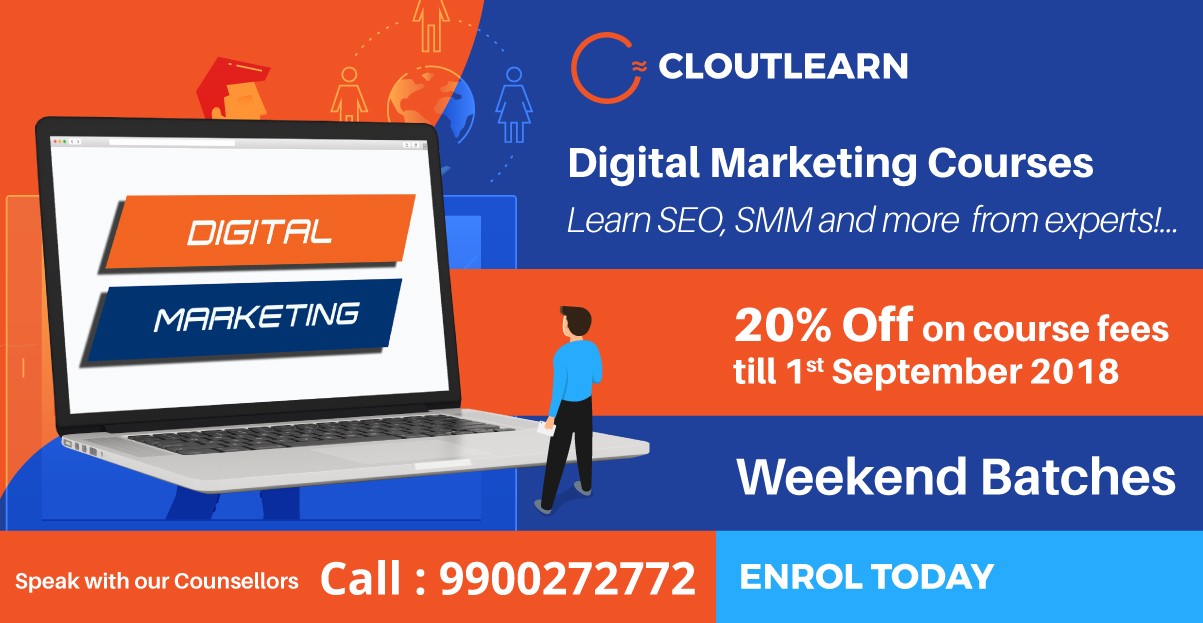
So you've decided to start your own digital marketing strategy. What's next? The article will take you through every step, from choosing your channel to research your audience. This article will help you create a customer journey, and how to split test your strategy. Once you have this information, your brand will know if it is working. If your strategy is not working, you are not the only one. There are many businesses that have faced the same question.
Researching your audience
In creating a digital marketing strategy, research your audience to better understand their needs. This can be done through quantitative research. This involves surveying large populations and producing statistical results. For example, if you want to create an email campaign for a specific audience, you need to identify their interests and pain points. To determine their purchasing habits, you can also examine their purchase history. This allows you to target your marketing messages to specific audiences.
You must understand your audience to create a digital marketing strategy that works. Without thorough research, it's impossible to understand your audience's needs and wants. Research can help identify those needs and tailor content to them. Research will also help you predict their needs so that your marketing is more effective. Here are some tips on researching your audience.
Interviews: Conducting surveys can help you understand your audience better. Surveys: You can email existing customers and publish customer reviews via social media. Interviews are also possible. These surveys will provide valuable insights into the personality of your audience. Then you can develop your digital strategy. It is important to research the audience. However, it is also crucial to create a compelling digital marketing campaign. This way, you'll be able to engage your audience and increase sales.
Segmentation: By understanding your audience's preferences, interests, and lifestyle, you'll be able to tailor your messaging to them. Segmentation allows you to communicate more effectively with your target audience and make it easier for them to engage in meaningful ways. Adidas, for example, sent a gender-specific email to its customers, while the clothing company categorised its audience by gender. Customers tend to buy jeans, and so a survey asking them for their opinions on the retailer would return an average score 8/10.
Choose your channels
It is essential to choose the right digital marketing channels for your product or services promotion. The primary goals, competition, budget, and other factors should guide your choice. Different channels can produce different results so make sure you choose the right channel for you. You will need to choose which channels you use to determine the types of content you want and how your ads are formatted. Although content marketing remains the king of marketing, and will remain relevant, it is essential to reach your audience.

The business goals will affect the choice of digital marketing channels. Your long-term and short term goals should be determined. Long-term goals could include increasing revenue by 20% in the next two-years. Short-term goals might include generating 400 qualified leads within six to eight months, or increasing website traffic by 70% in just eight months. It is crucial to understand your short-term, long-term and ultimate goals so you can choose the right channels for you.
Analyze the effectiveness of every channel before you make a decision about which one to use. Each channel is unique and has its strengths and weaknesses. Consider the cost of each channel's creative content and what type you will need. Before you decide to start using new channels in your digital advertising strategy, ensure that you have exhausted all your budget. Facebook and Twitter are the best channels to generate buzz.
Creating a customer journey
Customer journey maps are an important part of a digital marketing strategy. These maps show the path a customer takes from decision to action. The customer journey map serves many purposes. For example, it can show the customer's journey from the initial stage of the sales funnel up to the moment when they become lifelong customers. The customer journey map can also help identify where improvements can be made.
In simple terms, a customer's journey map shows how a prospect will get to the point of purchase. This helps marketers to map the questions prospects ask and the problems they encounter along the way. The higher-funnel stages aim to create awareness and interest while the final stages focus on fostering brand loyalty. The first step in this process is to create awareness. This can be achieved through word of mouth, social media, search engine suggestions and blogs.
After researching and learning about a brand, potential customers begin the information-gathering phase of the customer journey. Although they may not know you personally, they will know what they are looking for. Customers should be able to make an informed decision during this phase. In addition to this, brands can offer a free trial period to customers to eliminate any final obstacles in their purchasing process.
Marketers can use a customer journey map to help them target advertising by understanding how customers buy products and services. Each stage of the customer journey should have its own buyer persona. Marketers can tailor their marketing campaigns according to the goals of each stage by identifying these. Marketers can also create a customer journeymap to better understand the customers they are targeting by mapping out what motivates them at each stage of their decision-making process.
Split testing your strategy
Split testing can increase your business' profitability. It can be used in multiple areas of your digital marketing strategy. These areas include page copy, headlines, buttons text, images and social sharing buttons. Email marketing is also a good option. Below are some scenarios that you could test. Split testing is useful to determine which marketing tactics will result in increased sales and profit. You must use the right size sample. Split testing should be done regularly and should be conducted with an appropriate confidence rating.
Split testing helps you identify which marketing strategies are performing well and where you need to make improvements to maximize their effectiveness. Split testing allows you to track whether your online marketing strategies are generating leads or bringing in returns. Split testing involves experimenting with different versions of a website, or individual elements of it. Split testing can help you determine whether your website is profitable. You can then make adjustments to your digital marketing strategy once you know which variants are generating more leads.

ClickFunnels' ad library allows you to test 6 different versions one advertisement. Facebook is another place that can provide split-testing ideas. Facebook has many examples of ads that you can copy to find out which ones perform best. Split tests are possible by using landing pages. Split-testing can also be done on landing pages. Moving the CTA down from the fold increased conversions 30% while removing the CTA from the landing page led to cart abandonment rates dropping by 33%.
Split testing is an essential component of conversion optimization. Split testing is the process of dividing traffic into the control and variant groups. Split testing involves splitting traffic so that 50% of the traffic is shown the control variation, and the rest the variant. You divide traffic into equal segments and present one version of each variant to each segment in multivariate testing. Split testing can be a powerful tool in digital marketing. The results will amaze you!
Measuring its success
Measuring the results of your digital marketing strategy is a key step in creating a successful one. You can do this through a number of ways, including monitoring the number of visitors who have converted into buyers. To measure the effectiveness and efficiency of a campaign's efforts, you can use other metrics such as the number pages viewed. These metrics can be used to measure the effectiveness of a marketing campaign, as well the success of a particular marketing initiative.
To evaluate the success your digital marketing campaigns, you must track key performance indicator (KPIs) to gauge its success. KPIs measure the effectiveness of your marketing teams against a given goal. These targets can be high-level or low-level. These KPIs are useful in identifying the success of a campaign, as they provide a specific level of accuracy that can be used as a guide for future campaigns.
It is crucial to define specific goals for measuring your digital marketing strategies. How many people visited your website? Is your website inviting purchase? Are your email campaigns generating sales? Are you getting new business? How many people opened an email and made a purchase? These are just a few examples that you can track to see if your digital marketing strategy is effective. It all depends on your objectives and goals as well as your digital marketing strategy.
FAQ
How long does SEO take you to build traffic?
The average time it takes to generate traffic via SEO is 3-4 months. It depends on many variables.
-
Site content (quality)
-
Backlinks
-
Targeted keywords
-
Competitor rankings etc.
SEMrush provides a free trial to help you get started in SEO. The powerful platform allows you to track all aspects of your SEO campaign including competitor research, backlink profile and top pages. You can also view local listings, organic traffic stats and reports.
Why should I use SEO?
There are many reasons SEO is important.
This helps to increase your website's visibility in search engines results.
It helps to increase conversions, as it ensures that users search for exactly what they want by optimizing their search results.
It increases brand awareness by helping customers to find your business online.
It also improves the user experience by allowing users to navigate quickly through your website.
It creates trust and credibility among potential customers.
How much does it cost to rank high on search results?
Costs for search engine optimization vary depending on the type of project. Some projects require only basic changes to your existing website, while others involve redesigning everything from scratch. Monthly fees are charged for keyword research as well as maintenance.
What is Onpage SEO?
On-page SEO refers to the actions you take within your website to help it rank higher in search engines. Things such as site architecture, page titles, meta tags, and image alt text are all part of on-page SEO. Off-page is any activity that does not improve your website's rank. These include backlinks.
Where should my website be?
Your website should be located at the top of the search results. That means that it needs to appear near the top of every search result. Some searches can have hundreds of pages. How can your website compare to these competitors?
Statistics
- And 90%+ of these backlinks cite a specific stat from my post: (backlinko.com)
- Which led to a 70.43% boost in search engine traffic compared to the old version of the post: (backlinko.com)
- 93%of online experiences today begin on search engines. (marketinginsidergroup.com)
- 64% of marketers actively create SEO campaigns because they help hit multiple key performance indicators (KPIs), including increasing traffic, helping your site rank for relevant keywords, improving your conversion rate, and much more. (semrush.com)
- Deleting those 10k pages is one of the main reasons that he improved his site's organic traffic by nearly 90%: (backlinko.com)
External Links
How To
How important SEO off-page is
Optimize your site for search engines like Google, Bing, and Yahoo!
While optimizing your website for on-site SEO is crucial, there are many other things to take into consideration when optimizing your website. These include but are not limited to:
-
How does your site look (does it load quickly?)
-
Content quality and quantity
-
Social media presence
-
Redirects to your site via links
When optimizing your website, there are many things you should consider. You'll notice huge increases in traffic and rankings if these things are done correctly.
What is link-building? How does it work What are the pros and cons?
Here we explain a link-building strategy, how it works and what benefits it can bring to your website or brand.
-
1. Why do I need link-building strategies?
Link-building has been shown to be one of most effective ways to increase page rankings and traffic. Most businesses don’t realize this until they create a plan to increase their rankings and build links. If you want to know why, then continue reading!
-
What is link building and how does it benefit my business.
An effective way to build links to your site from other websites and directories is called a link building strategy. It is basically a process that involves finding relevant websites and contacting owners to ask them for a link back. There are two types, "outreach", and "content market," which both involve link building. Outreach is usually done manually, while software is used to automate content marketing. Both methods require some planning and time investment. But they can deliver great results over time. Let's talk in detail about each method.
-
What are some of the pros to a link building plan?
The best thing about a good strategy for link building is that it gives you more exposure, as you are able to reach out and trust others. This means you won't have to spend time trying to convince someone that your company is worth linking to. This saves time and effort.
-
Is there anything negative about a link-building strategy?
The main problem with a link building strategy, is that you need to make sure you have enough authority before you attempt to pitch your idea. Potential partners will need to see that you have something to offer. So before you start pitching other companies, first try to find out whether they would actually like to partner with you.
-
How do you choose the right strategy for building links? Is outreach better than content marketing?
This all depends on how you want to develop relationships with different companies. For example, you may want to use outreach for your B2B clients as it gives you a chance to meet new customers and build trust. You can also use content marketing to promote sales and generate leads if you're looking for a partnership deal with major retailers.
-
What should I consider when choosing a linkbuilding strategy? Are there any other things I should consider?
Here's some information to keep in mind when choosing a link-building strategy.
Whom are you targeting? It is important to know what type of site your pitch will be placed on. This depends on the niche.
Do you sell products online? Then you might want to focus on getting links from blogs about fashion, beauty, food, etc. You can also target local directories like Yelp and Citysearch if you're selling services.
What's your goal? It is important to select a strategy to increase SEO rankings. If you don't, you'll just be spreading low quality link around.
What budget do you have? Many people believe they can do both outreach and content marketing at the same time, but it is not true.
You can only do one thing at a time. For example, it is impossible to write and publish blog posts all day.
-
Where can I get started with my link building strategy?
Before you start a link-building program, decide how much of your time and money. Start small to see where you can take your efforts. Once you've figured out the best link building strategy for your company, you can increase your efforts.